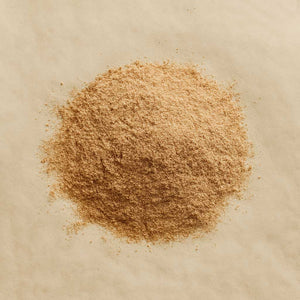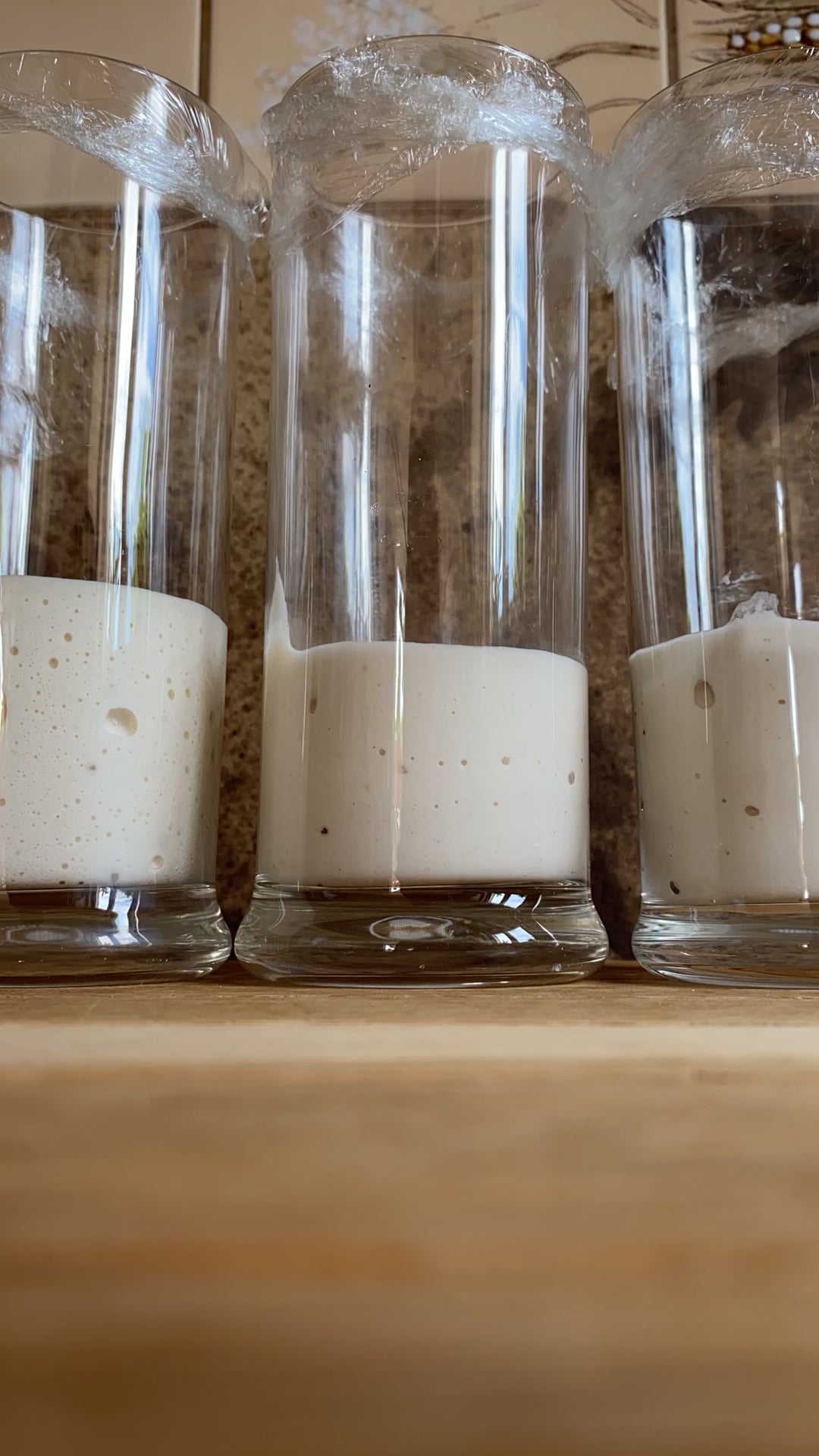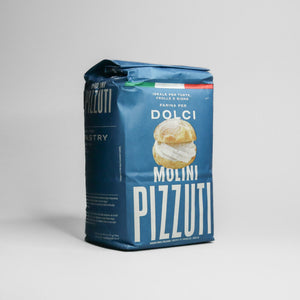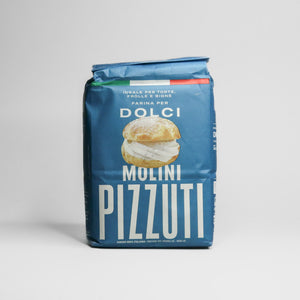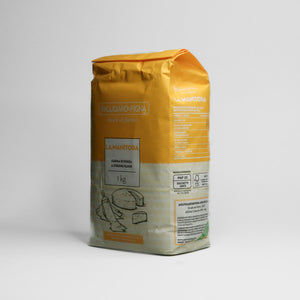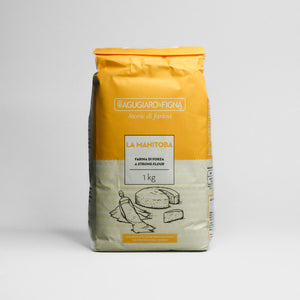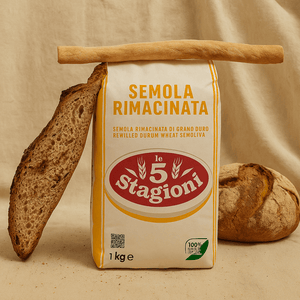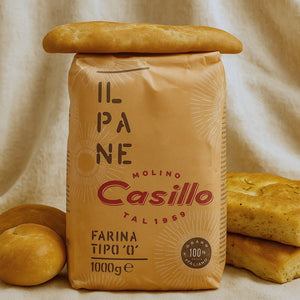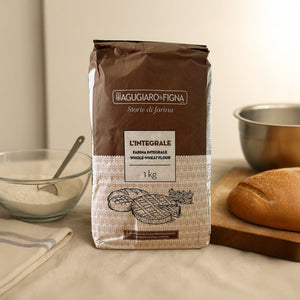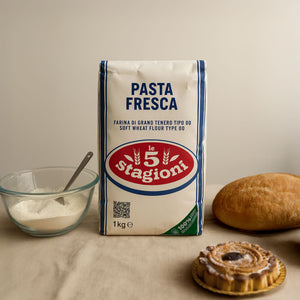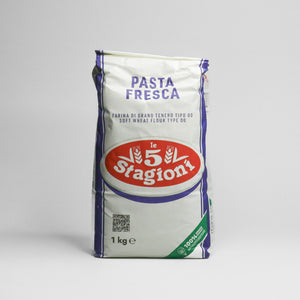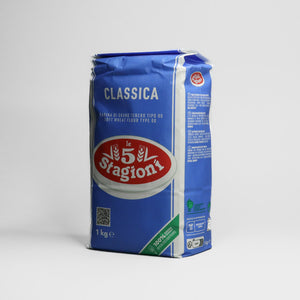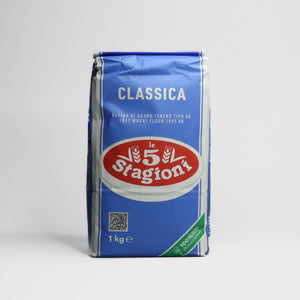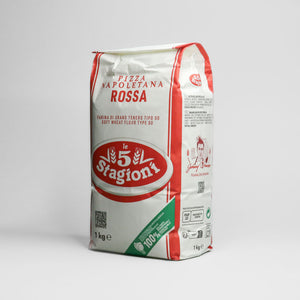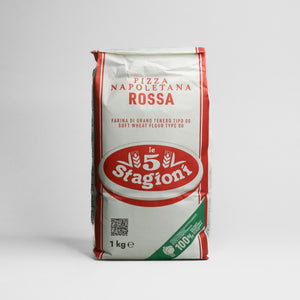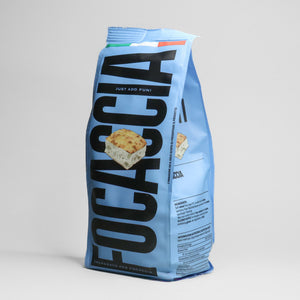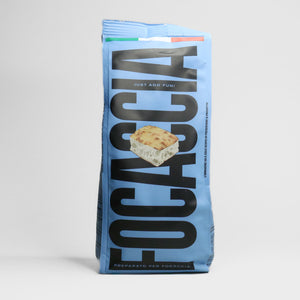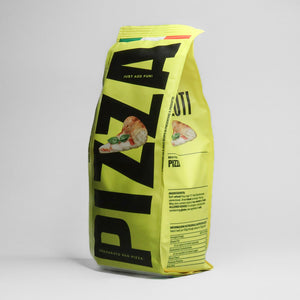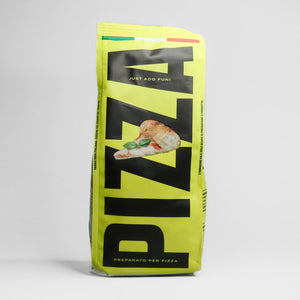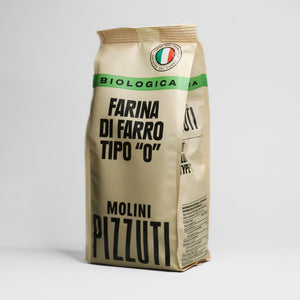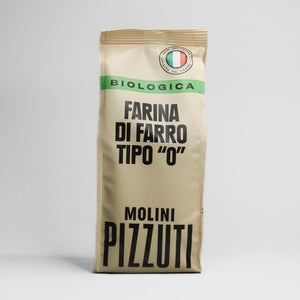How often to feed sourdough, where to store it and when is the best time to bake?
Jun 29, 2025
Not sure how often to feed your yeast ? The best thing to do is to remember that your yeast is like a pet. You need to take care of it and feed it regularly.
Not with a recipe, but with properly fed sourdough, all work with homemade bread begins. In this article, we'll look at how often to feed sourdough, when it's best to use it for baking, and where it will do best, whether it's rye or wheat-based.
Rye versus wheat sourdough – each has its own character
Rye sourdough is like an old, stable friend. It tolerates lower temperatures, isn't bothered by mood swings (or the weather), and will almost always rise, even if you forget about it for a while. It's perfect for beginners and rustic breads with a firm crust.
Wheat sourdough, on the other hand, is delicate, has a fruity scent, and requires more care. It loves warmth and precision. It is therefore ideal for delicate doughs, brioches, or milk breads. If you feed it correctly, it will reward you with a springy texture and lightness.
![]()
It's entirely up to you how many kvass you want to have at home and how often you will use it.
How often to feed sourdough?
It depends on where you store it.
If the yeast is on the line
You need to feed every 12 to 24 hours , depending on the ambient temperature. Feed more often in the summer. Rye sourdough can withstand a longer period of starvation than wheat sourdough, but both will thank you for the regularity.
In wheat kvass, acids accumulate more quickly, which can slow down the fermentation process – you can tell by the sharp vinegar smell. That's why I recommend that everyone sniff the kvass regularly. Some people even taste it, and that's fine. The tongue is also a good indicator.
If you store the yeast in the refrigerator
It is stated everywhere that feeding once a week is enough. But I recommend rather once every 5 days: ideally take it out of the fridge, leave it on the line for a while, feed it, let it come to life and then either put it back or feed it once or twice more , put it in the dough and bake.
Before using it, it is best to prepare the starter, two to three feedings in a row at room temperature, so that it really "gets going". If you need clear instructions on how to ferment and feed in detail, download the free e-book , where it goes down a (baker's) path.
When is sourdough ready for baking?
You can tell the right time by the bubbles, volume, cap and smell.
The yeast should be warm, double or triple in volume . It should have a slightly raised cap (its surface), a light, fruity aroma (not sour), and feel fluffy to the touch and be full of bubbles when you poke it with a spoon.
It is best to use it 4 to 6 hours after feeding , when the yeast is at its peak – you can read more in the free ebook . As soon as it starts to fall, it is a good idea to either start another feeding or add it to the dough . The yeast is weakened at this stage, it has eaten what it had and the dough could rise more slowly or have a more sour taste. Therefore, try not only what suits you, but what bread you like. For me, that is the alpha and omega of everything.
Where should you store sourdough so that the bread rises properly?
If you only bake once a week (like a weekend loaf), then the refrigerator is the ideal place for the in-between baking period. After using, simply feed the starter, put it back in the fridge, and before the next baking, you can wake it up again with a few feedings at room temperature. Just keep in mind that the temperature in the refrigerator is different on each shelf and in the front or back of the refrigerator. Therefore, always put the yeast in the same place that you have already tried. I would just not put it in the door, it is often opened and sometimes someone goes into the refrigerator just "to have a look".
But once you are baking twice a week or more, it is easier to keep the sourdough on track . Feed it twice a day , or more often if needed, and monitor its behavior. Adjust flour and water ratios and number of feedings according to its strength: rye sourdough can handle longer intervals and less frequent feeding , while wheat sourdough needs precision and more frequent guidance .
It doesn't matter where you store the yeast.
The refrigerator is just a temporary home. When you are going to bake, the yeast must be awake and active . They say that a cooled and slowed down yeast without regeneration will not rise your bread properly. But my dough rose even when I used yeast straight from the refrigerator, of course differently and more slowly than I am usually used to. That is why in these cases I really recommend: try what works for you .
This topic is often controversial among bakers , but worth touching on.
I personally kept sourdough starter in the fridge for a long time, even when baking more often, because it made sense to me at the time. But what I do is help with a hint, in the form of sniffing the starter.
The yeast will tell you very quickly with its smell. I look for a slightly sour, fruity smell . As soon as I smell vinegar, I know it's saying one thing: I'm tired and need to feed again.
That's why I keep a backup sourdough starter in the fridge – a small batch that I check twice a week and feed if necessary. Even in the cold, the sourdough starter continues to ferment, just more slowly. And if you take care of it, it will always reward you. Right now, I use wheat starter and I feed it once a day.
![]()
Initially, keep a regular yeast diary and note the smell of the yeast in it. Gradually, you will learn to recognize what is happening with the yeast and whether it will rise slowly or quickly. Typically, by the sharpness of the sour smell.
What about glasses? Cleanliness first
Someone prefers glass, another plastic jar . I say – whatever it is, the main thing is that it is clean . Bacteria multiply in a dirty glass that we have no control over.
Think of it like chopping fresh vegetables on the same cutting board you used to chop meat. No way. The starter needs a clean environment.
Personally, I wash the jar regularly , transfer the yeast to a bowl and feed it there. Or I remove most of the yeast, feed the rest, but finally wipe the inside of the jar with a damp kitchen paper towel to remove any yeast residue that has stuck to the jar. It's a small thing, but even this care makes a difference.
The basis is active yeast and the taste of bread
All of this I write here are my observations gathered over years of baking, observation, and also a lot of mistakes and errors that have led me to this point. But as I say in my courses and I follow this in life: everyone has the choice to try what works for them . Only one thing applies: the sourdough must be active and the bread must taste good . If this is happening, then you are on the right track.
But if you want to go deeper and become a professional baker, for example, then there's still a whole science behind it all - ratios, pH, temperature curves... etc. But everything has its time and when it does, I'll help you with that in my courses .




